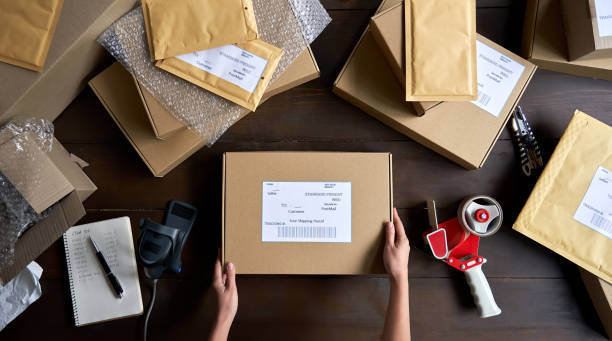
How Can E Commerce Packaging Evolve for Sustainability and Efficiency?
Share
According to the report by Next Move Strategy Consulting, E‑commerce Packaging Market size is predicted to reach USD 153.16 billion by 2030 with a CAGR of 12.9% from 2024-2030.
Download Your Free Sample Today: https://www.nextmsc.com/e-commerce-packaging-market/request-sample
It has transformed how consumers shop—and how products are packaged, shipped, and returned. With the global e‑commerce packaging market set to nearly double by 2030, businesses face mounting pressure from regulators, investors, and consumers to reduce waste, embrace circularity, and maintain cost‑efficiency. This blog explores the forces reshaping e‑commerce packaging, the innovations leading the way, and actionable steps companies can take today.
What Challenges Are Driving Change in E‑Commerce Packaging?
According to Deloitte, E‑commerce packaging is under scrutiny from four converging forces:
-
Market Growth vs. Sustainability Goals
The global e‑commerce packaging market is projected to grow even as companies—and their stakeholders—seek more sustainable solutions. -
Regulatory Pressure
The EU’s proposed Packaging and Packaging Waste Regulation (PPWR) will cap empty space in packages, mandate reusable packaging systems, and harmonize labelling across member states. -
Consumer Expectations
In Europe, 80% of consumers express interest in refillable packaging, 82% are willing to pay more for sustainable packaging, and 29% would pay a 10% premium. -
Investor Involvement
In 2023, over 180 investors managing in assets urged consumer goods companies to cut plastic packaging, signalling that capital flows will favour more circular models.
Summary: E‑commerce packaging sits at the nexus of rapid market expansion and urgent sustainability commitments, creating both risks and opportunities for businesses.
What Innovations Are Companies Delivering in Sustainable Packaging?
Companies are responding with circular, digitally enabled, and returnable packaging solutions.
Summary: By combining material innovation, lifecycle optimization, and digital integration, these solutions cut waste and enhance operational efficiency.
How Has the Pandemic Shaped E‑Commerce Packaging Trends?
According to Packaging Dive, COVID‑19 accelerated shifts already underway in packaging design and supply chain resilience:
-
Form‑Factor Evolution
A notable shift from traditional boxes to mailers and flexible packaging enabled lighter, more compact shipments—ideal for smaller, frequent orders. -
Surge‑Then‑Streamline
At the e‑commerce boom’s peak in 2022, corrugated box lead times soared to 10+ weeks; by early 2025, they normalized to an average of 8 days. -
Automation & Remote Technologies
Labour shortages spurred investment in robotics, remote monitoring, and advanced packaging equipment—accelerating adoption by 1–2 years compared to pre‑pandemic projections. -
Sustainable Packaging Push
Increased visibility of single‑use delivery packaging waste heightened consumer calls for eco‑friendly options, though inflationary pressures have limited premium uptake.
Summary: The pandemic catalysed a more agile, automated, and sustainability‑focused approach to e‑commerce packaging.
What Legislative and Consumer Expectations Should You Track?
According to Deloitte, E‑commerce packaging strategies must align with evolving rules and shopper values:
- EU PPWR Requirements
- Minimum Size: Optimize packaging to the smallest footprint.
- Reusable Systems: Establish take‑back and reuse programs.
- Harmonized Labelling: Standardize recycling instructions and content declarations.
- Consumer Willingness to Pay
- 82% of shoppers will pay more for sustainable packaging
- 29% accept a ≥10% price premium.
- Investor Expectations
- Ongoing pressure for circularity from investors managing $10 trillion in assets.
Summary: Compliance with regulations, transparent labelling, and meeting consumer price‑value trade‑offs are critical to brand reputation and market access.
Next Steps: 4 Actionable Takeaways
- Audit Your Packaging Footprint
- Map current materials, average void ratios, and lifecycle emissions.
- Identify quick wins (e.g. right‑sizing, recycled content).
- Pilot Reusable Programs
- Partner with circular packaging startups or carriers to trial returnable mailers.
- Measure reuse rates and customer satisfaction.
- Invest in Automation & Data
- Integrate on‑demand box‑forming machines and void‑fill dispensers.
- Deploy QR/RFID tagging for traceability and performance analytics.
- Align with Regulatory Roadmaps
- Stay ahead of PPWR deadlines for void space and labelling.
- Engage with local regulators to influence practical implementation.
- Educate & Engage Consumers
- Clearly communicate environmental benefits and return instructions.
- Offer incentives (discounts, loyalty points) for packaging returns.
By assessing current practices, adopting circular packaging innovations, and embracing automation, e‑commerce businesses can reduce waste, meet stakeholder expectations, and strengthen their competitive edge—all while preparing for an increasingly regulated and sustainability‑driven market.